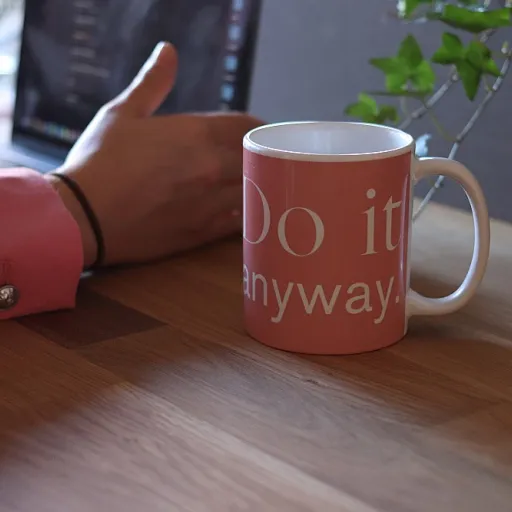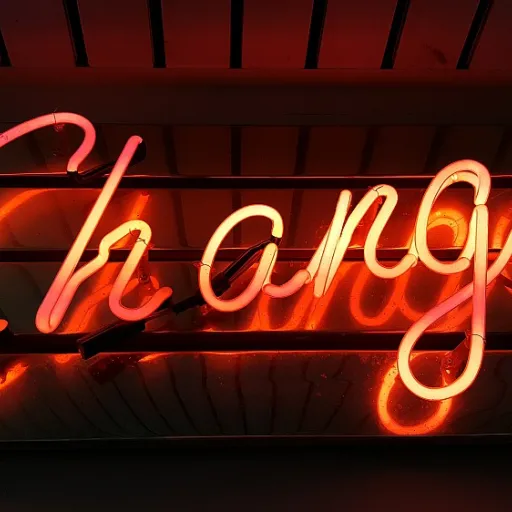
What is a 13 panel drug test and why is it used
Why employers and organizations rely on comprehensive drug screening
In the United States, the need for reliable drug testing has grown across many industries. Employers, healthcare providers, and even legal authorities use a variety of drug tests to identify health risks and ensure safety. Among these, the 13 panel drug test stands out for its broad coverage. This test panel is designed to detect a wide range of substances, including both common and emerging drugs of abuse. The test is often administered using a test cup or oral fluid collection, making it accessible and efficient for both organizations and individuals.
What makes the 13 panel drug test different?
The 13 panel drug test is more comprehensive than standard panels. While basic tests might only screen for a handful of substances, this panel includes drugs like benzodiazepines, barbiturates, amphetamines, cocaine, opiates, marijuana metabolite, fentanyl, propoxyphene, and more. Some versions also incorporate alcohol testing. The test is often CLIA waived, meaning it meets certain federal standards for accuracy and reliability, which is crucial for organizations that need dependable results.
| Test Panel | Substances Detected | Sample Type |
|---|---|---|
| 13 Panel Drug Test | Benzodiazepines, barbiturates, amphetamines, cocaine, opiates, marijuana metabolite, fentanyl, propoxyphene, and more | Urine (test cup), oral fluid |
How the process works and what to expect
Typically, the process starts with a reflex order from an employer or healthcare provider. The individual provides a sample, usually in a cup drug test format. The sample is then screened for multiple substances. If a result is positive, further testing may be done to confirm the presence of a specific drug or metabolite, such as a cocaine metabolite or marijuana metabolite. The use of multi-drug test cups and advanced screen test methods helps ensure quick and accurate results.
As drug testing evolves, the 13 panel test is becoming a standard for organizations that want a thorough drug screen. For more on how courts evaluate trial decisions related to background check trends, you can read this in-depth analysis of legal review in background checks.
Substances detected by the 13 panel drug test
Common Substances Detected in a 13 Panel Drug Screen
A 13 panel drug test is designed to identify a broad range of substances that may impact workplace safety and performance. This test panel is often used by employers, healthcare providers, and legal authorities in the United States to ensure compliance and promote health standards. The test uses either urine test cups or oral fluid collection methods, and is often CLIA waived for convenience and reliability. The substances detected by a 13 panel drug test typically include:- Marijuana metabolite (THC)
- Cocaine metabolite
- Opiates (such as morphine and codeine)
- Amphetamines
- Methamphetamines
- Phencyclidine (PCP)
- Benzodiazepines
- Barbiturates
- Methadone
- Propoxyphene
- Ecstasy (MDMA)
- Fentanyl
- Alcohol (via alcohol testing strip or separate screen)
How the Test Works and What the Results Mean
A typical 13 panel drug test uses a test cup or oral fluid device to collect a sample. The test cup contains strips that react with specific drug metabolites. If a metabolite is present above a certain threshold, the test will yield a positive result for that substance. In some cases, a reflex order may be placed for confirmatory testing in a laboratory, especially if the initial screen test is positive. Employers and candidates should understand that a positive result does not always indicate current impairment, but rather the presence of a drug or its metabolite in the system. Detection windows vary by substance and individual metabolism. For example, marijuana metabolites can linger in the body longer than cocaine or amphetamines.Why These Substances Matter in Background Checks
The inclusion of substances like fentanyl, barbiturates, and benzodiazepines reflects growing concerns about prescription drug misuse and the opioid crisis. Fentanyl drug testing, in particular, has become more common due to its potency and risk profile. Barbiturates benzodiazepines are also monitored because of their sedative effects and potential for abuse. Employers use these tests panel options to identify health and safety risks, comply with federal and state regulations, and maintain a safe work environment. The results can influence hiring decisions and ongoing employment status, making it crucial for both employers and job candidates to understand the scope of the test. For more details on how disciplinary infractions related to drug tests can impact background checks, visit understanding disciplinary infractions in background checks.How the 13 panel drug test fits into background check trends
Growing Role of Comprehensive Drug Screens in Hiring
Employers across the United States are increasingly turning to the 13 panel drug test as part of their background check process. This shift reflects a broader trend: organizations want to identify health and safety risks more thoroughly, especially in safety-sensitive industries. The 13 panel test cup covers a wider range of substances than older tests, including opiates, amphetamines, cocaine metabolite, marijuana metabolite, barbiturates, benzodiazepines, and newer threats like fentanyl drug and propoxyphene.Why More Panels Matter in Today’s Workplace
The workplace drug testing landscape has evolved. Traditional 5 or 10 panel drug tests often missed emerging drugs. The 13 panel drug screen now includes substances like fentanyl and additional benzodiazepines, which have become more common in misuse cases. Employers use these tests panel options to get a clearer picture of potential risks, aiming to reduce workplace accidents and liability.Integration with Modern Screening Practices
Drug testing is no longer just about urine test cups. Oral fluid tests and CLIA waived test panel options are gaining traction for their convenience and reliability. Reflex order protocols—where a positive result on an initial screen test triggers a more detailed analysis—are also becoming standard. This layered approach helps ensure accuracy and fairness in the drug testing process.Data-Driven Decisions and Compliance
Employers are using drug test results alongside other background check data to make informed hiring decisions. The use of comprehensive cup drug tests is often paired with strict adherence to legal and privacy standards. For those interested in how these practices intersect with data privacy regulations, this resource on GDPR audits in background checks provides valuable insights.| Test Panel | Substances Detected | Sample Type | CLIA Waived |
|---|---|---|---|
| 13 Panel Drug Test | Opiates, amphetamines, cocaine, marijuana, barbiturates, benzodiazepines, fentanyl, propoxyphene, and more | Urine, oral fluid | Available |
| 10 Panel Drug Test | Opiates, amphetamines, cocaine, marijuana, barbiturates, benzodiazepines, and others | Urine | Available |
Legal and ethical considerations for employers
Balancing Compliance and Fairness in Drug Testing
Employers in the United States who use a 13 panel drug test must navigate a complex landscape of legal and ethical responsibilities. The use of drug tests, including those that screen for substances like benzodiazepines, cocaine metabolite, opiates, barbiturates, fentanyl, and marijuana metabolite, is regulated by federal and state laws. Regulations such as the Americans with Disabilities Act (ADA) and the Equal Employment Opportunity Commission (EEOC) guidelines require that testing policies do not discriminate and that results are handled confidentially.Key Legal Considerations for Employers
- Consent and Notification: Employers are generally required to inform candidates about drug testing policies and obtain written consent before ordering a test panel or using a test cup for screening.
- CLIA Waived Tests: Many organizations use CLIA waived test cups and panels to ensure compliance with health regulations, but must confirm that these tests meet local and federal standards for accuracy and reliability.
- Handling Positive Results: If a drug screen identifies a positive result for substances such as amphetamines, barbiturates benzodiazepines, or fentanyl drug, employers must follow due process. This often involves a reflex order for confirmation testing, especially when oral fluid or urine cup drug tests are used.
- Privacy and Data Security: Protecting the privacy of test results is essential. Employers must store drug test and health information securely and limit access to authorized personnel only.
Ethical Challenges in Drug Screening
Beyond legal compliance, ethical considerations play a significant role in drug testing for employment. Employers should ensure that their drug testing policies are transparent, respect individual privacy, and avoid unnecessary intrusion into candidates' personal lives. The choice of substances included in the tests panel—such as propoxyphene, alcohol testing, or less common drugs—should be relevant to the job and workplace safety requirements. Employers are encouraged to regularly review their drug testing programs to align with evolving legal standards and societal expectations, ensuring that the process remains fair, respectful, and effective in identifying health and safety risks.What job candidates should expect during the process
What to Expect When Taking a 13 Panel Drug Test
If you’re a job candidate facing a 13 panel drug test, it’s natural to have questions about the process. Here’s what you can expect, from the initial order to receiving your result.- Notification and Scheduling: Employers typically inform candidates in advance that a drug test is required. You may receive instructions to visit a specific collection site or clinic. Sometimes, a reflex order is used if further testing is needed after an initial screen.
- Sample Collection: Most 13 panel drug tests use urine samples, collected in a test cup. Some employers may use oral fluid tests, depending on their policy and the test panel required. The collection process is straightforward and usually takes only a few minutes.
- Test Cup and Handling: The test cup is labeled and sealed to ensure the integrity of your sample. Many facilities use CLIA waived test cups, which meet regulatory standards for health and safety in the United States.
- Substances Screened: The 13 panel drug test is designed to identify health risks by screening for a broad range of substances. These include marijuana metabolite, cocaine metabolite, amphetamines, opiates, barbiturates, benzodiazepines, fentanyl drug, propoxyphene, and sometimes alcohol testing. The table below summarizes common substances detected:
| Substance | Detected Metabolite |
|---|---|
| Marijuana | THC-COOH (marijuana metabolite) |
| Cocaine | Benzoylecgonine (cocaine metabolite) |
| Amphetamines | Amphetamine, Methamphetamine |
| Opiates | Morphine, Codeine |
| Barbiturates | Secobarbital, Phenobarbital |
| Benzodiazepines | Oxazepam, Diazepam |
| Fentanyl | Nor-fentanyl |
| Propoxyphene | Norpropoxyphene |
| Alcohol | Ethyl Glucuronide |
- Test Processing: After collection, your sample is screened using the appropriate tests panel. If the initial screen test is positive, a confirmation test is performed to verify the result. This two-step process helps reduce the risk of false positives.
- Result Notification: Results are usually available within a few days. You may receive your result directly or through your employer, depending on the testing provider’s policy.
- Rights and Privacy: Your health information and drug test result are protected by privacy laws. Employers must handle your data confidentially and follow legal guidelines throughout the drug testing process.
Challenges and future directions in drug testing for background checks
Emerging Technologies and Persistent Hurdles
Drug testing in background checks is evolving, but it still faces several challenges. As new substances like fentanyl and synthetic cannabinoids appear, test panels must adapt quickly. Many 13 panel drug tests now include fentanyl drug screens and can detect a wider range of drugs, such as benzodiazepines, barbiturates, amphetamines, and propoxyphene. However, keeping up with emerging drugs and their metabolites is a constant race for test manufacturers and laboratories.
Accuracy and Reliability Concerns
One of the main issues is ensuring the accuracy of test results. False positives and negatives can occur, especially with test cups that are not CLIA waived or when using rapid cup drug screens. Cross-reactivity between substances, such as between barbiturates benzodiazepines or certain amphetamines, can complicate interpretation. Confirmatory testing and reflex order protocols are often needed to verify initial screen test results, but this adds time and cost to the process.
Changing Legal Landscape
Legal regulations around drug testing, especially for marijuana metabolite detection, are shifting in many parts of the United States. Some states have legalized marijuana for medical or recreational use, which impacts how employers use drug tests in hiring decisions. This means employers must regularly review their drug testing policies to stay compliant and avoid legal risks. Alcohol testing is also subject to varying state and federal guidelines, further complicating the compliance landscape.
Privacy and Ethical Considerations
Balancing workplace safety with individual privacy remains a challenge. Oral fluid tests and urine test cups can identify health information beyond drug use, raising ethical questions about what should be reported to employers. There is also ongoing debate about the fairness of testing for substances like cocaine metabolite or opiates, especially when prescription medications are involved.
Future Directions in Drug Screening
- Adoption of more comprehensive test panels that can detect a broader range of drugs and metabolites
- Increased use of oral fluid and hair testing for longer detection windows
- Development of more accurate, rapid, and CLIA waived test cups
- Greater focus on identifying health risks and impairment, not just drug presence
As drug testing technology advances, both employers and job candidates will need to stay informed about new tests, changing regulations, and best practices for interpreting results. The goal is to ensure fair, accurate, and relevant screening that supports workplace safety and respects individual rights.












